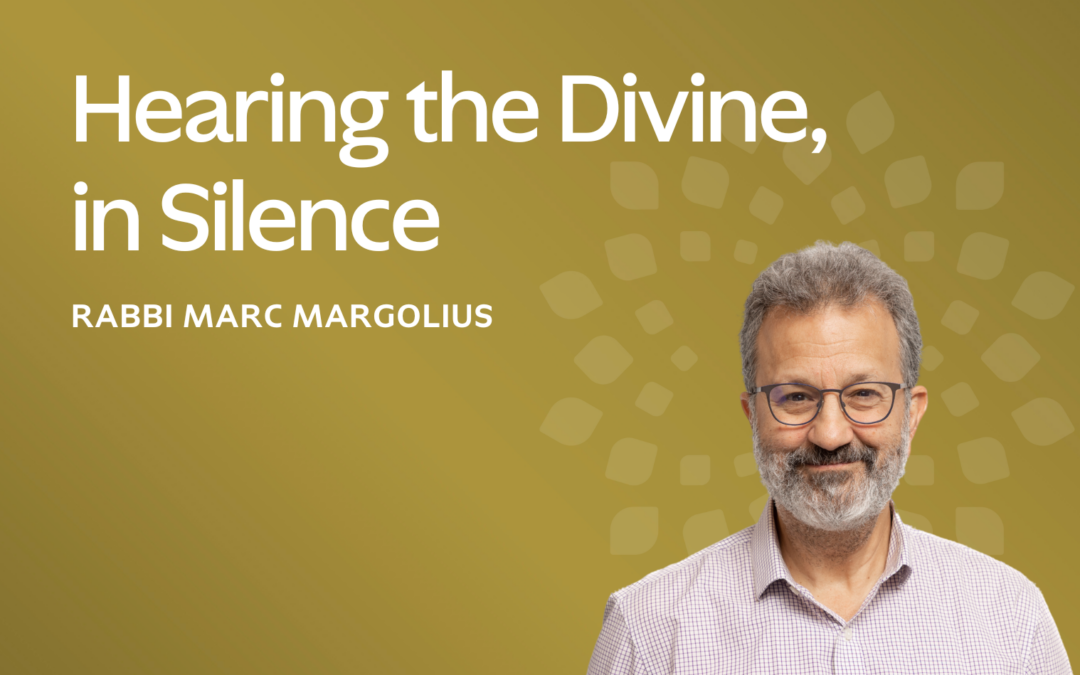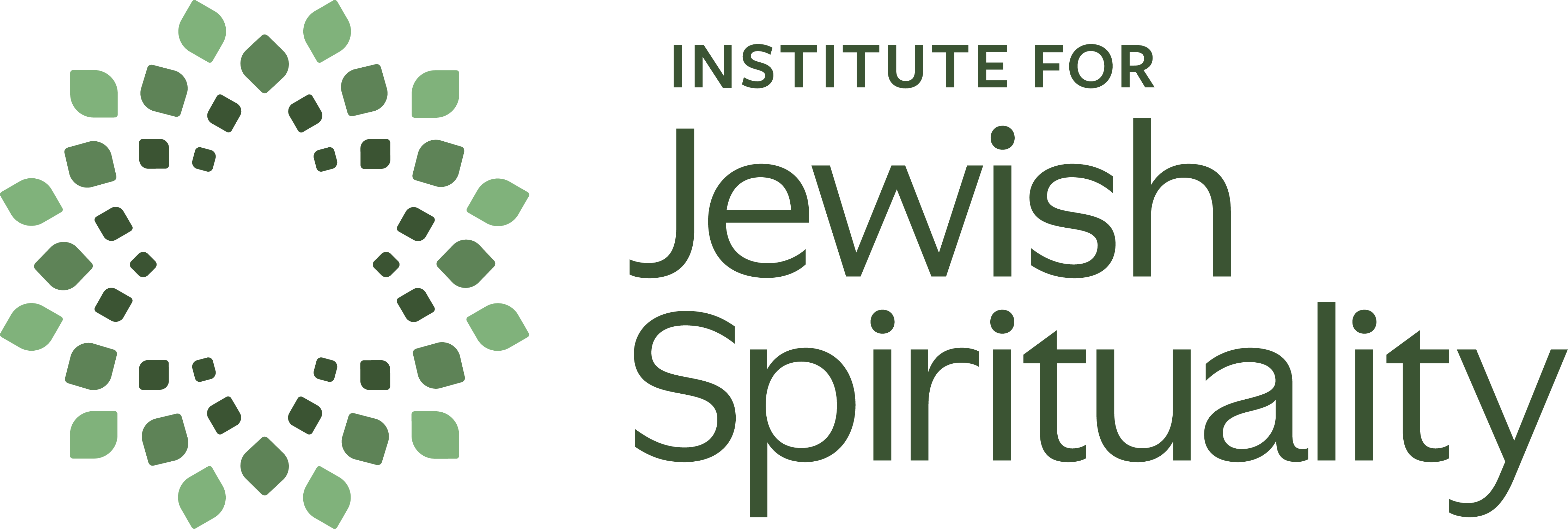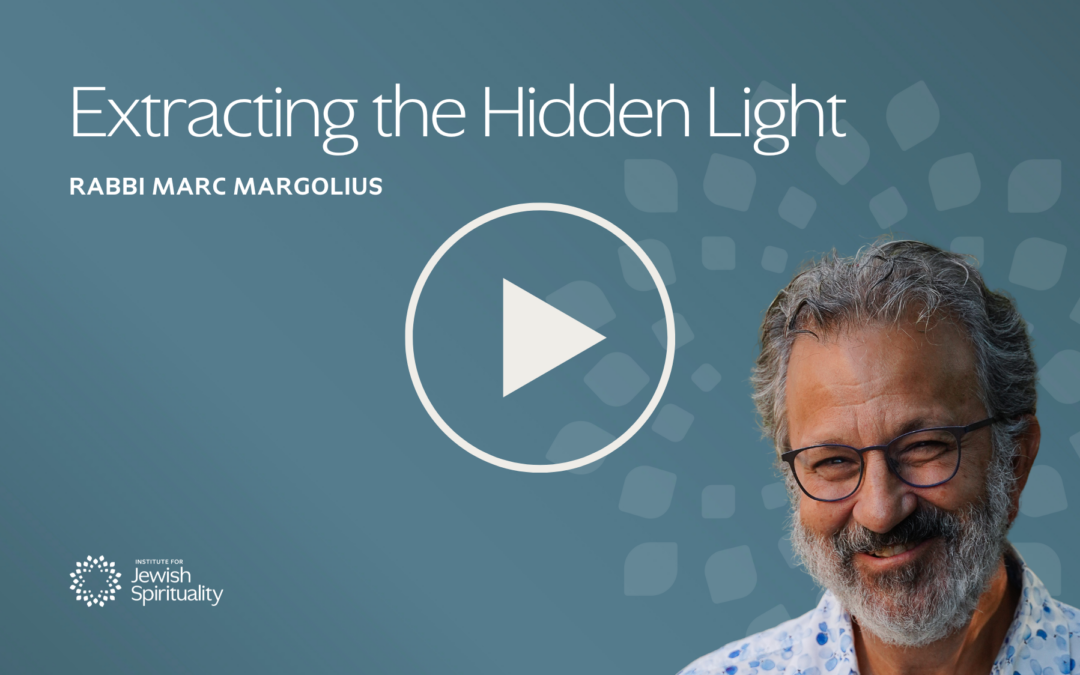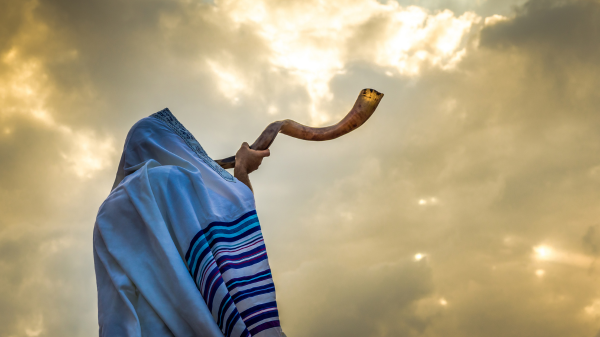
Hearing the Divine, in Silence
The holiday of Shavuot, commemorating the revelation of Torah at Mount Sinai, begins this year Sunday night, June 1. It is striking that despite the cacophonous scene of revelation described in the Torah in Exodus 19, there is a stream within Jewish tradition that emphasizes silence as the context for intimate encounter with the Divine.
Rabbinic tradition offers an interpretation that at Mount Sinai, the people heard only the first two of the Ten Commandments: “I am YHVH your God” and “you shall have no other gods beside Me.” A Hasidic tradition asserts that at Sinai the people “heard” only the first letter of the first word—that is, the silent letter aleph.¹
We can understand the experience of revelation at Sinai as consisting of “hearing” only Divine “silence,” the sound of the letter aleph – a concept we find as well in rabbinic literature:
Rabbi Abahu taught in the name of Rabbi Yohanan: When God gave the Torah, no bird twittered, nor fowl flew, no ox lowed, none of the ofanim stirred a wing, the seraphim did not say, ‘Holy, Holy’, the sea did did not roar, no creature spoke; the whole world was hushed into breathless silence and the voice went forth:, ‘I am YHVH your God.’²
The Bible (I Kings 19) relates that the prophet Elijah has a similar experience of revelation when he flees from Queen Jezebel and finds refuge at Mt. Sinai. There, like Moses at the burning bush and the Israelites at Sinai, Elijah “hears God” in the kol d’mama dakah, the “still, small voice”—the sound of silence.
While many of us claim to yearn for more quiet in our lives, in mindfulness practice we often notice how silence can render us uncomfortable and desiring distraction. As we attempt to settle into stillness, we may observe an inclination to “stir things up,” to “entertain” our minds and avoid what we perceive as “boring” or threatening.
As we notice these aversions, we do not judge them or seek to repress them. Rather, we accept them with compassion as part of what it means to be human—as instincts to protect our vulnerable selves—and we allow them to pass. Moment by moment, we let down our guard, slowly surrender distractions, and settle into silence. We become more present, “flush” with our experience in the moment. In such a moment, it is as if we too are standing at Sinai.
In silence, we become acquainted with our more authentic self. The writer Dinty Moore offers this helpful analogy:
The mind is like a bowl of water… sloshing back and forth, spilling out the sides. Most of us have lives like earthquakes, so the water is in constant motion. Add to this the fact that we are always grabbing at the water, struggling to make sense of our brain messages, yet all the grabbing just further churns the liquid. Two things have to happen for the bowl of water to come to rest. First, you have to turn off the faucet, stop all that input. Second, you have to quit grabbing. What happens finally, if you are successful, is that the water settles and… the still water of the mind then becomes a mirror in which you can find yourself.³
In Jewish mindfulness practice, we seek to quiet the inner conversation, to “let the water settle,” and see ourselves as whole human beings, part of the Unity that is God. Harpu u-d’u ki anochi elohim, says the Psalmist [46:11], “be still, and know that I am God.” In stillness, we can discern that Anochi, the “I,” our self, offers a path to deeper wisdom.
As a practice for Shavuot in our incessantly noisy world, we might dedicate time and space to immerse in silence. We might pay particular attention to moments when we seek to avoid stillness or silence, such as by playing the radio or a podcast. Experiment each day with turning off anything that produces sound in such situations; explore, without judgment, habitual reactions of mind and emotion when encountering silence.
You might also practice by inserting a bit more silence into life, seeking out a quiet space or time each day, imagining ourselves as “standing at Sinai,” listening for the kol demamah dakah, the “still, small Voice.”.
Finally, we might practice silence even in the midst of conversation, while listening to someone else, by noticing and releasing the inclination to formulate a response rather than fully attending to the other, instead listening as fully as possible.
At any moment, we can access the inner stillness which brings us back to the foot of the holy mountain, and open ourselves to receive the wisdom being revealed. At any moment, we can be present at Sinai.
¹ Gershom Scholem, the great scholar of Jewish mysticism, comments on the teaching of Rabbi Mendel of Rimanov (d. 1814) in On the Kabbalah and its Symbolism (Schocken: 1965), p. 65: “To hear the aleph is to hear next to nothing; it is the preparation for all audible language, but in itself conveys no determinate, specific meaning. Thus, with his daring statement that the actual revelation to Israel consisted only of the aleph, Rabbi Mendel transformed the revelation on Mount Sinai into a mystical revelation, pregnant with infinite meaning, but without specific meaning.”
² Exodus Rabbah 29:9
³ Dinty Moore, The Accidental Buddhist: Mindfulness, Enlightenment, and Sitting Still (Algonquin Books: 1997), p. 187.






